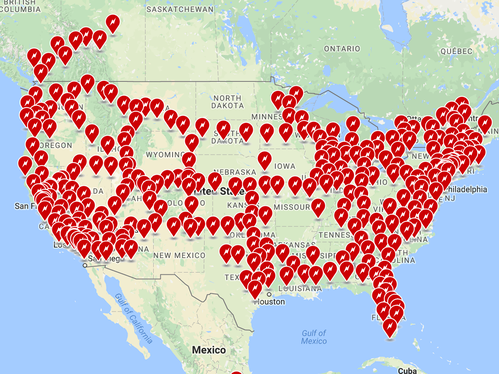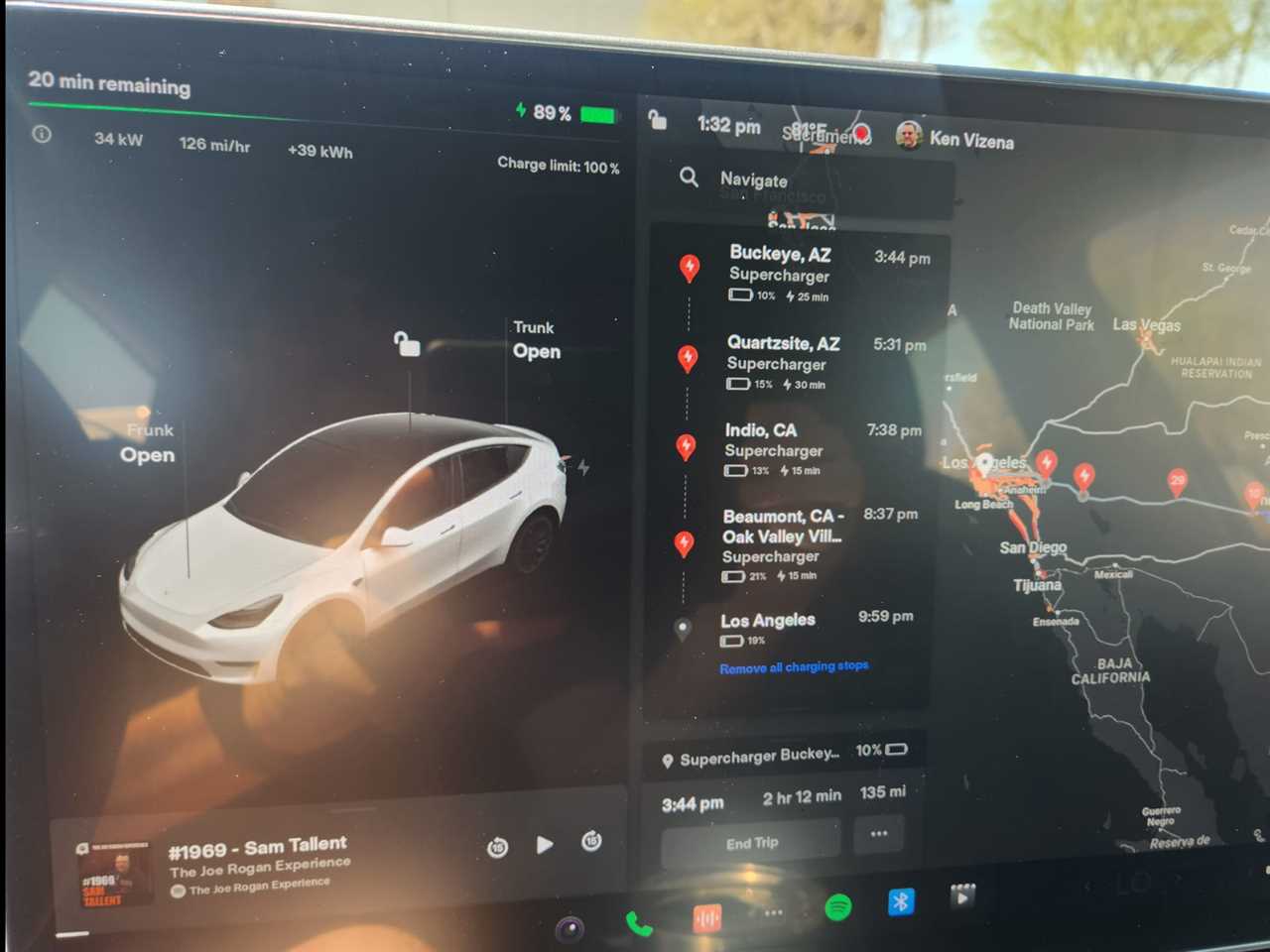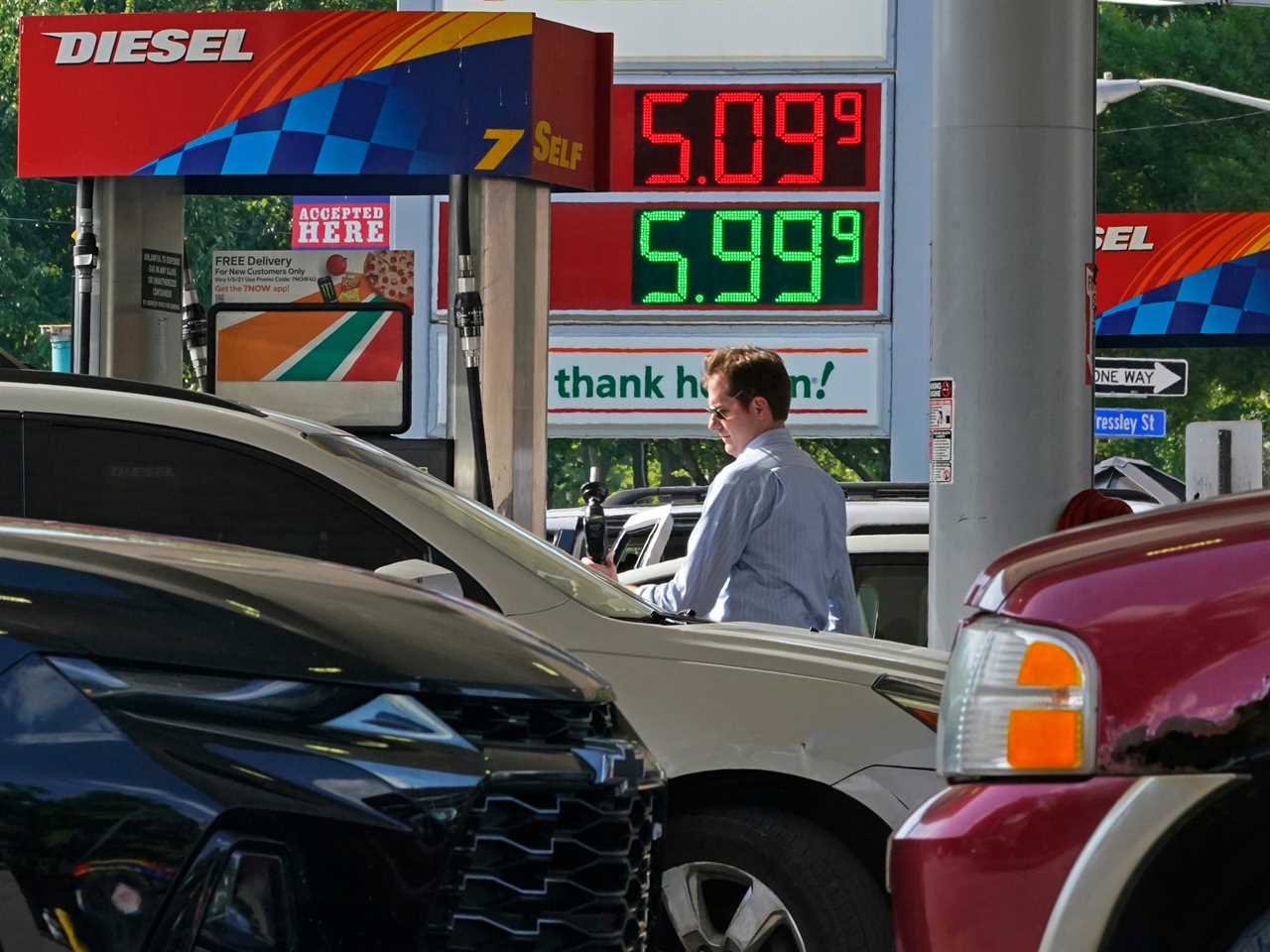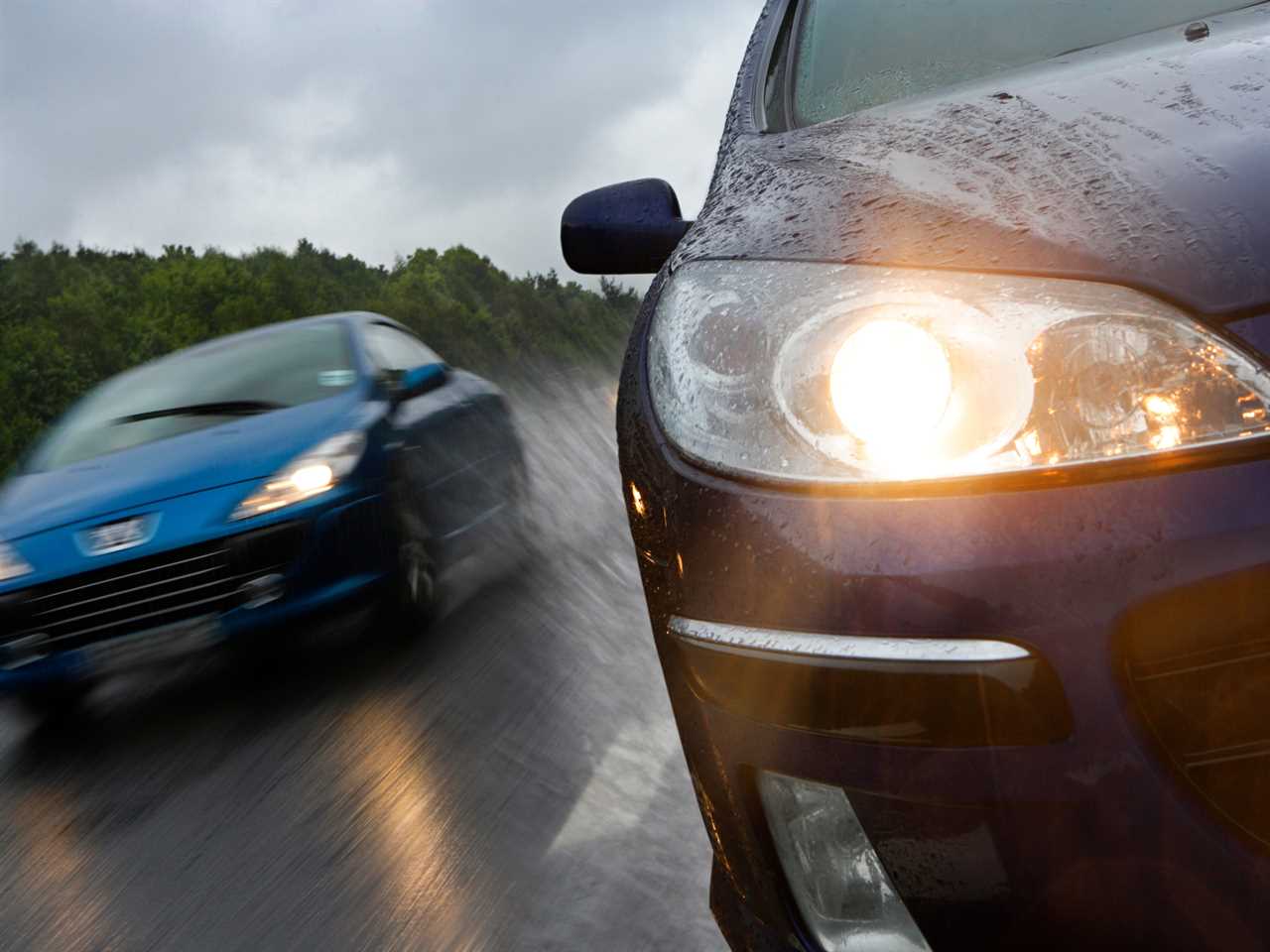
Getty Images
- Tesla owners and a renter described their experience taking the EV on cross-country road trips.
- Some Tesla owners highlighted the benefits of taking the EV on long trips
- Take a look at some of their tips for taking a Tesla on a road trip.
While some EV owners have shared horror stories about taking an electric car on a road trip, some Tesla owners say those drivers probably just haven't mastered the learning curve yet.
Eight Tesla veterans and a first-time Tesla renter shared some tips on how to execute a successful EV road trip in a series of conversations with Insider — from avoiding certain routes to planning ahead and getting creative on the road.
Range anxiety and a lack of charging infrastructure are key hurdles when it comes to EV adoption, but Tesla owners say it's possible to ditch concerns about charging on the road and even lean into some of the benefits of taking an electric car across the country, including saving on gas and enjoying Tesla amenities like Autopilot. Still, some drivers say road trips in a Tesla can be a major headache.
Here's what Tesla owners say about their experiences taking the car on a long road trip.

George Rose/Getty Images
Many Tesla owners said it's common to feel anxious on your first EV road trip.
"After the first outbound trip when I was being very careful and charging to a higher percentage than necessary at each stop, I learned to trust what my Tesla was telling me about the state of charge, my expected range, and that there were chargers along the way," Dennis Duncan, a Model Y owner who has taken his EV on cross-country trips, including on an annual trip from Washington state to Montana, told Insider.

Courtesy of William Scholtz
"Start somewhere within 200 miles of your origin and become accustomed to the range and how your driving impacts it," said Ken Vizena, a Model Y owner who has taken his vehicle on numerous cross-country trips. "Don't start off driving cross country. Start off with medium trips in hugely populated areas."
Vizena said it's important to pay attention to not only how many charging stations are along your route, but also where they are located along the path. He said new Tesla owners should ask themselves several questions before they set off on a road trip with their EV, namely: How far off course will the chargers take you? Are they located in areas where you would feel safe waiting?

Tesla Motors
Tesla has spent over a decade building out more than 20,000 Superchargers in North America, earning it the region's largest network of roadside fast chargers. Moreover, Superchargers are widely regarded as more reliable and easy to use than other networks' chargers. Non-Tesla EV owners rely on a shakier patchwork of public chargers, which can be difficult to find and are plagued by reliability issues.
"I couldn't even imagine being with another car company and relying on third-party chargers," Jonathan Baalke, a Model 3 owner in Kentucky who says he drives over 150 miles a day for work, previously told Insider. "It's hard to have range anxiety when you have access to Tesla's network, but if I was with any other brand's cars, I would definitely have some concerns."
More recently, the EV company has said it plans to open some of its exclusive Supercharger network to non-Tesla EV companies like Ford and General Motors.

George Rose/Getty Images
"I stop to charge about every four hours," David Craig, a Model S owner who recently took his Tesla on a 8,500-mile road trip, said. "It's just a natural stopping point. Even if you were driving a traditional car you'd want to take breaks and fuel up. I plug it in at a Supercharger and usually there's a restaurant nearby where I grab lunch."
A Supercharger can recharge a Tesla with up to 200 miles of range in 15 minutes, according to the company's website. A Model 3 standard vehicle delivers an estimated range of about 333 miles, according to Tesla. And the carmaker's longest-range vehicle, the Model S, can deliver an estimated range of up to 405 miles, the company says.

Courtesy of Ken Vizena
"It requires a lot of planning to take a road trip with an EV," Leonard Zuga, a Model Y owner who plans to take his vehicle on a trip from Ohio to Florida, told Insider. "I use multiple systems, including Tesla's onboard system. I know what hotels and Superchargers I will use before we've even started packing. Every hotel I select is within a few minutes of a Supercharger. If you do not like planning ahead you won't do well as an EV owner."
Zuga said he's using ChatGPT, and several charge-planning applications, including EV Trip Optimizer and PlugShare, to plan his trip to Florida in addition to the car's internal navigation system. It will be the longest road trip he's taken yet with the vehicle.
Vizena said he liked to plan ahead using a site called A Better Route Planner.

Courtesy of Ken Vizena
Brian Loughman, a Model 3 owner, said he typically relies solely on the internal navigation system, which incorporates charging sites into the journey and alerts drivers to which charging sites it predicts will be most efficient and which ones are busier. It's a favorite feature among Tesla owners.
"Hop in the car while connected to your home charger and program the full route into the car," Loughman told Insider over email. "It will tell you where to stop, how low your battery will be when you get there, and how many minutes you'll need to charge before continuing on your route."

Courtesy of Ken Vizena
"It took me into an Indian reservation, and the path ended at a gate that said, 'Your GPS is wrong, turn around,'" Vizena told Insider of one of his road trips from Houston, Texas, to Los Angeles. "I had to backtrack to the Supercharger 40 miles away and ignore the built-in map."

Travis Woolford for LIV Sotheby’s International Realty
Vizena told Insider he's avoided taking his Tesla on trips to more rural states like Idaho or Montana. Zuga and Ken Becker, a Model 3 owner, said when they drove through Ohio Superchargers were few and far between. And Duncan said there's some road trips he's had to put off until Tesla's charging network grows more.
William Scholtz, who rented a Model 3 from Hertz for a cross-country, monthlong trip, said he and his wife weren't able to go to all the places they'd anticipated because they were constrained by a lack of charging options.
"We planned to visit a friend who farms near Sylvia, Kansas, but it was impossible," Scholtz said. "There are simply no charging stations of any kind that would bring us to his farm and back."
Scholtz said the couple attempted to trickle-charge at another point in their journey, but it took too long.

Courtesy of Leonard Zuga
If you have the patience, you can get by with trickle-charging, some Tesla owners said.
Zuga said he likes to charge his Tesla at RV outlets when he camps. Becker said it makes sense to trickle-charge or use a slower, Level 1 charger, if you're staying in one place for a while.
A trickle charge can take up to 50 hours or more to bring an EV from empty to 80% of capacity, while a Level 2 charger can do so in four to 10 hours, according to the Department of Transportation.
Insider previously reported that a Model Y owner used a trickle-charge to visit a remote monument in California. "It was only a standard 120V outlet, so we would be trickle charging, not supercharging, but that was sufficient to more than replace, overnight, whatever energy we used on our daily excursions around the Monument," the Model Y owner, Kathleen Goforth said in a blog post about her road trip.

Courtesy of William Scholtz
"If you're in a major hurry to get to your destination an EV might not be the best idea," Scholtz said. "It will take longer to charge than filling up your tank. It will take time to find chargers on your route, and sometimes those chargers take you off a direct route. Also, if you're driving too fast that will only decrease your range."

Hum Images/Universal Images Group via Getty Images
"A lot more can fail on an internal combustion engine," Craig said. "Your biggest worry with a Tesla is that you'll get a flat tire.
Driving a Tesla means no more oil changes, and an EV requires less upkeep overall, according to data from Consumer Reports.
"With an ICE vehicle there is anxiety about a variety of mechanical things like overheating, engine problems of many kinds, or brake burnout going down major grades or in mountain driving," Duncan said. "A Tesla won't overheat and actually recharges your battery going downhill instead of overheating and wearing out your brakes."
Though, Teslas aren't fully immune to breaks. Vizena said he had to spend an entire road trip with a broken air conditioner in his Tesla and showed a picture where the internal temperature in his car reached 99 degrees.

AP Photo/Gene J. Puskar
As of July, the average electric car owner could save between $1,000 to $1,200 per year in fuel costs as compared to using an EV charger, according to Consumer Reports. The publication found that EV owners will continue to save money in overall operating and maintenance costs as long as the price for gasoline remains above 50 cents per gallon.
"It's hard to explain the glee of driving by a gas station knowing you don't have to worry about the prices anymore," Nelson Jackson, a Model S owner, previously told Insider.

Courtesy of David Craig
Craig said he used Tesla's Camp Mode to sleep in his Model S during his 19-day road trip.
The feature lets the car keep a steady temperature in the cabin, as well as proper airflow. You can also listen to music, stream television, turn on lights, or charge devices while the vehicle is in the mode. The feature, which was introduced in 2021, uses significantly less energy and even has a video of a crackling fire. It is one of many specialized Tesla features, including Dog Mode and Sentry Mode.
"With a traditional car you'd have to turn it off, it would get cold and you have to turn it back on," Craig said. "In my Tesla, the temperature stays perfect and I'm comfortable all night long."

Chris Walker/Chicago Tribune/Tribune News Service via Getty Images
All Tesla models are equipped with the Autopilot feature, which enables a car to steer, accelerate, and brake automatically within its lane. The function does not replace the role of a driver, but is intended to make driving easier and cut down on accidents. Some drivers can also opt into Tesla's Full Self-Driving software, a beta feature that costs $15,000 — or $199 per month — and allows the vehicle to change lanes, as well as recognize stop lights and stop signs.
Earlier this year, Model S owner Tim Heckman told Insider the driver assist features were a "lifesaver" on his 6,392-mile road trip.
"It can be a huge cognitive relief. Long trips can take a mental toll," Heckman said at the time, noting that he'sd used Autopilot on previous road trips and discovered he could drive further without getting tired.
Zuga told Insider Autopilot is one of several features that he feels make road trips less stressful and safer in a Tesla.
"Driving that car is a lot less tiring than driving a gas vehicle because of all of the extra driver features like the cameras all around the car and Autopilot," Zuga said. "I can put the blinker on and get a good look of the whole left side and behind and when I'm slowing down and regenerative braking kicks in and you know your tailights are on. It just gives you better situational awareness."
But, not everyone is sold on the features. The National Highway Traffic Safety Administration is investigating Autopilot and its potential connection to several accidents and the California Department of Motor Vehicles has accused the company of falsely advertising its Autopilot and FSD features.

Peter Cade/Getty Images
Scholtz said he wasn't fully sold on buying a Tesla after he rented one through Hertz for his road trip. He said his experience renting the EV went downhill fast when he had to take it to more rural areas and he faced a lot of stress with the vehicle's range, as well as finding chargers along his route.
"It was nail biting," Scholtz said, adding that while he thinks the Model 3 is a great car it doesn't fit his lifestyle.
"I still prefer my F-150 with its 40 gallon tank that gives me a 700 miles range."
Tesla did not respond to a request for comment ahead of publication.
Read More
By: [email protected] (Grace Kay)
Title: Tesla owners share their best tips for taking an EV on a road trip
Sourced From: www.businessinsider.com/tesla-owners-share-tips-for-taking-ev-on-road-trip-2023-8
Published Date: Sat, 19 Aug 2023 09:30:00 +0000
.png)





